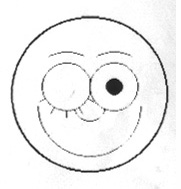Emotion Research: Clinical Psychology

Psychoanalytic/Psychodynamic
Psychoanalytic and psychodynamic psychotherapies are grouped here because
of their shared emphasis of the criticality of early life experiences in
determining the nature internal representations, personality, and behavior.
These approaches to psychotherapy also share an emphasis on the importance
of conscious awareness of conflicts and understanding of their origins
(insight) as the primary means of inducing lasting personality change.
This insight can be accomplished cognitively but is most effective when
coupled with active, heightened affect, which may occur when the client
is actively, affectively engaged with the psychotherapist (transference).
However, no coherent theory of emotion exists for psychodynamic approaches
as a whole, and theories of emotion for selected theoretical perspectives
are therefore discussed separately below. The subdisciplines of psychodynamic
theories differ in their conceptualization of the causes of psychopathology
and emotional disorders, as will be seen below. In reading these theories,
it is important to remember that they were conceptualized largely before
the advent of modern cognitive psychology and cognitive science. Their
language tends to be more vague than more recent descriptions, but one
can see many points of agreement with recent information processing points
of view. This is true especially for Jung's view of thinking and feeling,
which is consistent with recent experiential psychotherapy theories as
well as with the information processing view of emotion exemplified by
LeDoux's work (LeDoux theory of
affect, LeDoux
circuit).
- Freud (Freud
Museum,Freud
Archives)
Emotions are synonymous with "psychic energy" and are
linked to instinctual, largely unconscious drives, which must be made conscious
("where id was there ego shall be") in order to be "tamed"
and socialized.
Different stimuli elicit different degrees and types of affective responses,
depending on the individual's internal makeup (personality). Pathologies
result from the repression of the discharge of this psychic energy "strangulation
of affect" (i.e., lack of a full experiencing of affect associated
with an (traumatic) event). This repression of affect causes repeated activation
of thoughts somehow associated with the triggering event. Cure occurs through
abreaction (also referred to as catharsis) (Nichols, 1986), that is, the
emotional discharge associated with the full re-experiencing of the initial
triggering event. Abreaction can occur through appropriate action or through
verbal expression, when the conflictual material is brought into consciousness.
Emotions, unlike ideas, do not have an independent existence at an unconscious
level. Freud focused in particular on anxiety, which he thought was triggered
by an unacceptable drive or wish surfacing into consciousness. Anxiety
signaled the emergence of such repressed material into consciousness, hence
the term "signal anxiety". For Freud emotions had little adaptive
value. Emotions were made use of in treatment to identify conflictual or
repressed material, which was then dealt with cognitively, through insight.
- Jung
and Analytical Psychotherapy
Both thinking and feeling are means of evaluating perceptions of
the world, and both are considered rational (in contrast to the irrational
functions of sensing and intuiting, which provide the information to be
evaluated).
Thinking produces propositional appraisals and requires more time,
feeling determines values (good/bad) and is instantaneous. Ideas, especially
repressed ideas, are linked (in the unconscious) via affect. Strong affect
indicates that a part of the personality which has been repressed into
the unconscious must be recognized and addressed. Jung's emphasis in psychotherapy
was on experiencing, rather than theorizing about, in spite of the fact
that interpretation, particularly the interpretation of dreams, played
a major role in Jungian therapy (Kaufman, 1989).
- Ego Psychologists
Emotions, while initially tightly linked with drives (i.e., instinctual
impulses), differentiate through development into separate processes which
are linked to motivation.
The ego psychologists, like Jung, separate affect from basic drives
and give emotions both an independent existence and an adaptive function.
They also address the topic of affective development. The ability to experience
different affects evolves, just as cognition does, enabling the individual
to experience more differentiated affective states. Development progresses
through the following stages: distress vs. lethargy; pleasure vs. unpleasure;
full range of adult affective repertoire. Degree of affective complexity
is an indication of mental health. Affect is considered a major motivating
force in psychic activity and patterns of affective experiencing and responding
are more difficult to change than their cognitive analogs. The affective
patterns can distort cognitive and perceptual activity, causing maladaptive
behaviors. Treatment focuses on first activating and then correcting these
distortions in the context of the therapeutic relationship (transference).
Blanck and Blanck, 1974; Greenberg and Safran, 1987.
- Object-relations/Self Psychology/Interpersonal
Emotions are viewed as primary motivational mechanisms linked with
satisfying biological needs through interpersonal interactions. Affect
is not associated with the discharge of drives but rather a means of communicating
with the world and as adaptive signals about the relative state of satisfaction
or frustration of basic needs.
These psychodynamic schools of thought are grouped together because
of their emphasis on the development (and pathologies) of internal representations
of self and others and their emphasis on the importance of interpersonal
relationships. Object relations theorists such as Kernberg, Fairnbairn,
Winnicott, and Klein begin to speak about internal structures representing
self and others and identify the integration of these structures as one
of the roles of emotions. These representational theories can be thought
of as precursors of the more modern notions of cognitive-affective schemas
- complex combinations of representations and affective evaluations. Interpersonal
theorists consider emotions to be integrating tendencies and divide them
into satisfaction tendencies, which motivate towards the satisfaction
of basic biological needs, whose exact patterns is individual-specific,
and security tendencies, which motivate towards acceptance by others
(Sullivan, 1956). Psychopathology results from suppression of the basic
biological needs, whose exact nature is a function of the personality (Horney's
"true self"), in order to gain acceptance from others (via an
"idealized self"). Emotions, both positive and negative, arise
in response to the satisfaction or frustration of basic needs. Emotions
are thus important signals indicating the nature of the true, authentic
self, and have a critical adaptive value. The role of emotions as a means
of communicating is particularly critical in the early infant-mother communication
and the establishment of the initial attachment, which provides a foundation
for later interpersonal attachments and internal mental representations
of self and others. Self-psychologists (Kohut and Basch) focus in particular
on the internal representations related to the self, the level of their
integration, and the degree to which they enable objective, adaptive perceptions
of self and others.
Greenberg and Safran, 1987; Basch, 1976

Editor: Eva Hudlicka [psychometrixassociates.com]
 Please
send us your comments.
Please
send us your comments.